We think this Campfire just might *resonate*…
We’ve noticed a huge rise in what we’re calling “functional experiences”: those based on insights from neuroscience and other scientific research to make you smarter, happier, more curious and more creative. Read our take on the trend here.
But how do we create such functional experiences?
As experience designers, we already understand the power of playing with sensory stimulation to allow people to reconnect with both their environments and themselves.
And when it comes to audio, we might already have tried a sound or gong bath, used sound effects and music to amplify the impact of our work, and personally experienced the transformative effects of a particular song.
However, the true potential of immersive audio to transform participants – not only in the moment, but for the long term – is still relatively unexplored. It’s up to experience pioneers to navigate the lines between entertainment and therapy, seek out the boundaries between a transformative and a triggering audio experience, and manipulate hypnagogic states and unexplored senses to have a positive impact.
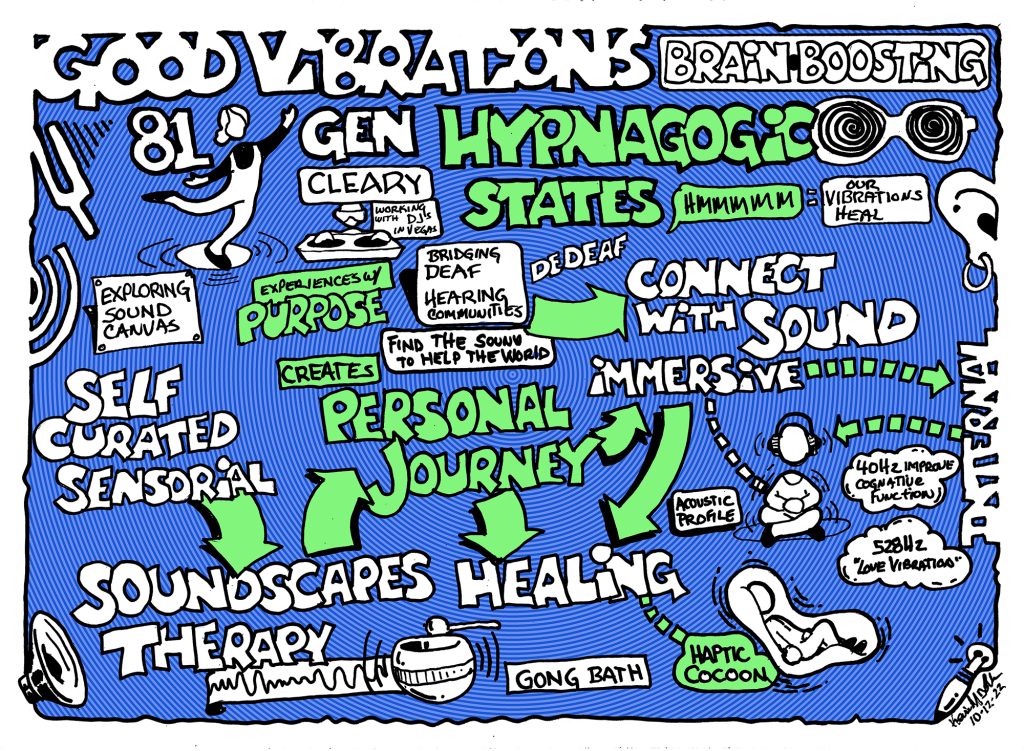
Gen Cleary is one such pioneer: a creative producer, audio immersive expert and the CEO of Make Some Noise, which bridges entertainment, the science of sound and wellness to create immersive experiences with a purpose.
She joined us for an ear-opening Campfire to tell the story of The Hum, its first interactive installation which aims to transform the way people listen via a 360 spatial vibro-musical-immersive experience.
“Our mission is to raise awareness about the impact of sound on our wellbeing and in our world. It’s our goal to allow everyone to connect with the multidimensions of sound beyond hearing.”
Gen Cleary
A group hum – or “cacophony of cows”, as one participant memorably called it – kicked off a truly insightful and exciting Campfire that cemented our belief in the power of functional experiences to transform people. Here are a few key takeaways.
When It All Goes Pete Tong: Pivot!
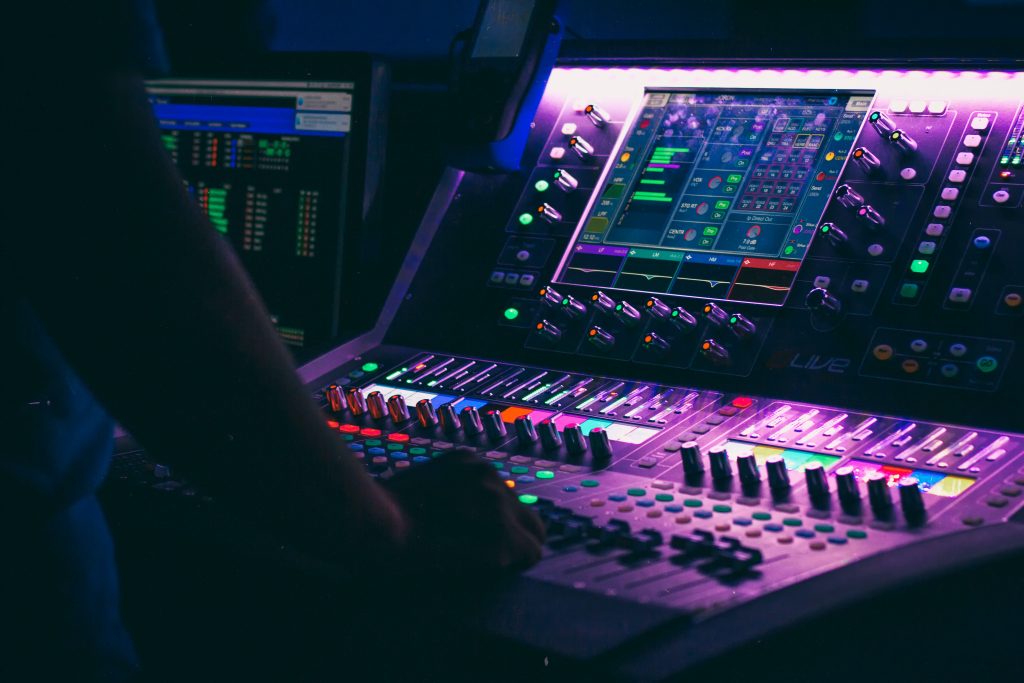
Cleary’s background in producing spectacles for Las Vegas DJ sets and Disney meant that she was always aware of sound as a piece of the puzzle, experimenting with using nightclubs as containers in which to push forward sensorial journeys that explore sound.
But it wasn’t until she was introduced to sound baths and the sound ceremonies used by Brazilian and Mexican tribes that her perspective on the potential of sound shifted.
“I wanted to find another angle to entertainment: purpose. I’d always been surrounded by sound, from being a professional tap dancer to a creative producer, and used it as my vocabulary. The need to find this purpose led me to explore it within the context of immersive experiences.”
Gen Cleary
Cleary ended up purchasing the rights to the movie It’s All Gone Pete Tong, which movingly follows the story of a DJ who loses his hearing and has to learn to reconnect with sound through his other senses.
She worked with people from the deaf and hard of hearing community, realising that they have a “superpower” of connecting with sound in a way that hearing people perhaps lack.
And when she had to pull the plug on the experience opening in April 2020 thanks to the pandemic, the thought processes were already in place to bring together these learnings and create something new around our connection with sound.
Tuning Into Frequencies And Rippling Outwards
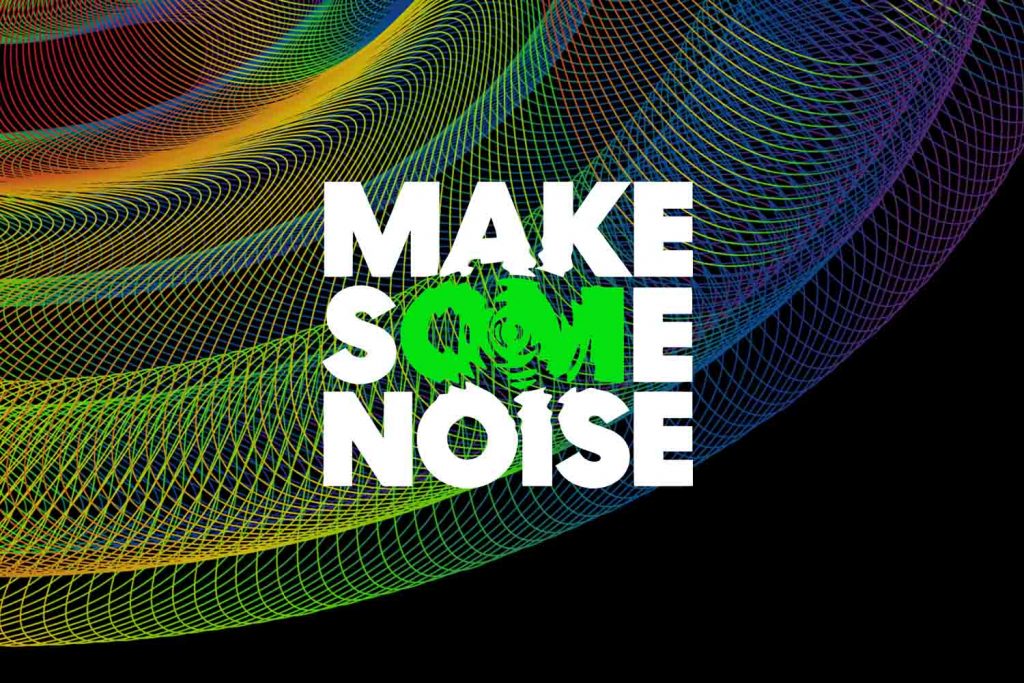
“Our mission is to identify the frequencies of sound that people should connect with. By raising awareness of the frequencies that surround us on a daily basis, there’s so much we can benefit from.”
Gen Cleary
Sound can be used to hack your sense of taste, for example – studies in hospitals on those with diabetes used sound waves to give the impression they were eating something sweet, even though it was sugar free, and white wine is scientifically proven to taste terrible while listening to rock music.
The result of this thinking was Make Some Noise and specifically The Hum, launched at SXSW 2021. It is a 10-foot sculptural work with a cradle space where the user can relax, reset, re-energise and experience the transformative effect vibrations have on the body via a combination of vibro acoustic, music therapy, sound immersive spatial therapy and psychoacoustics, via haptics and diverse technologies.
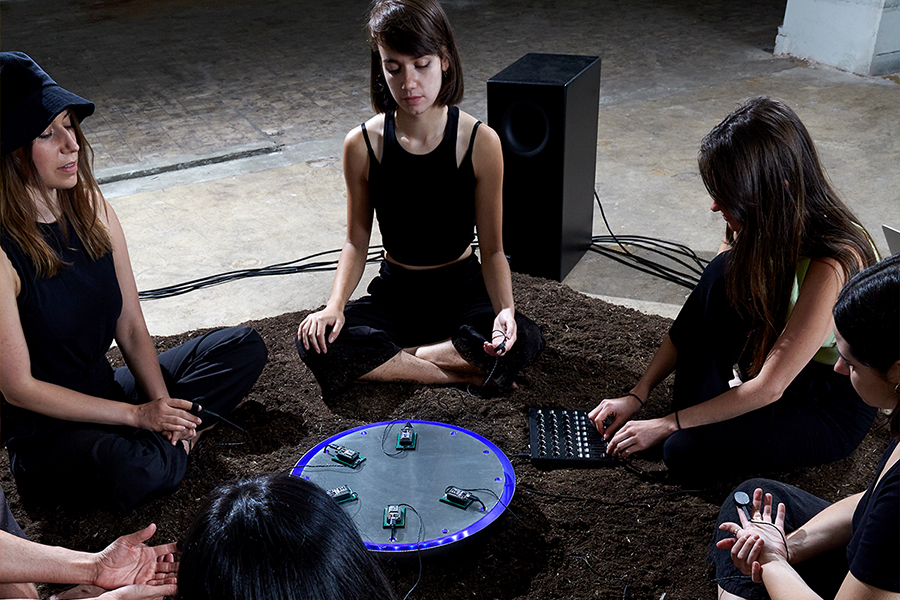
When you sit on the installation, which Clearly calls “one giant haptic device”, you put on an eye mask and headphones and enter your own soundscape via a 360 immersive experience. You receive vibrations through 28 transducers that transmit all the frequencies of sound throughout your body. Some of the benefits that might occur are:
- The Limbic System returns to a calm state, which over time helps the body self-regulate and become more resilient to stressors.
- The Relaxation Response is activated.
- Heart rate slows and heart rate variability improves.
- Blood pressure lowers.
- Muscles relax.
- Pain lessens.
- Circulation increases.
“We want to use frequencies that can enhance somebody’s life. People can regain energy by connecting from the frequency of the Earth to the cosmic.”
Gen Cleary
This energy is something that has been tapped into for centuries by cultures around the world, and indeed it’s fashionable for people to go into the jungle, for example, and do sound therapy – but this isn’t something that’s accessible or of interest to everyone.
By studying these different frequencies and seeking to understand how they impact people, Cleary hopes to bring the same experience to the masses – and inspire others to do the same.
“Our goal is to raise awareness and sensibility, but also to create ‘a rippling effect’. We’re so disconnected from the frequencies of the world and each other that we’re suffering from it. These experiences have the potential to make us feel better about ourselves, life, and each other.”
Gen Cleary
Why Sensory Deprivation Can Increase Connection
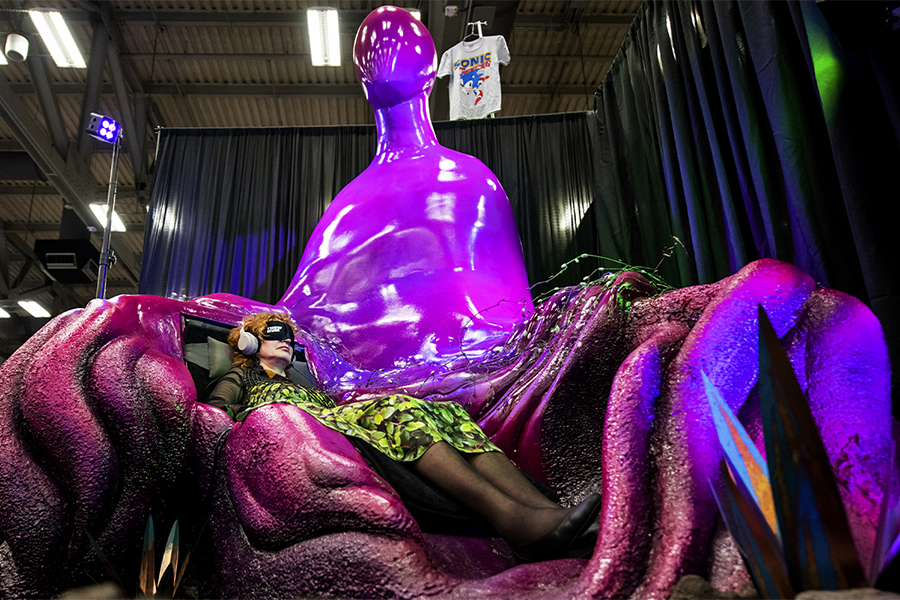
In order to “surrender to sound”, The Hum is a closed-eye experience – much like Dreamachine, another “functional experience” that uses a curated soundscape (alongside flashing lights) to explore the nuances of perception. By shutting off one sense, we amplify our others.
“We haven’t yet done anything with VR, as we want to raise awareness for the possibility of sound without distraction and show that we’re used to the overstimulation of our senses.”
Gen Cleary
And as we explored in Campfire 67: How Meow Wolf Makes Art Accessible, designing without all five of the senses not only makes the experience more accessible to those with disabilities, but opens up new channels of connection to all.
“To listen through your ears in The Hum is an add-on. The main concept is that you are receiving sound that you can and cannot hear through your entire body, in a very vibrant way. I worked with a virtuoso percussionist called Evelyn Glennie who got in the habit of asking, ‘you can hear, but are you listening?’”
Gen Cleary
Fellow audio immersive designer Charlotte-Amélie Veaux also uses binaural sound and haptics in her Tree of Life experience, and asks people to close their eyes and reconnect with their own imagination, leading them to imagining many different types of forest specific to them.
Experience designer Pigalle Tavakkoli also cited the example of “deaf raves”, where both hearing and deaf people were given balloons so they could feel the vibrations of the bass together.
The Line Between Entertainment And Therapy
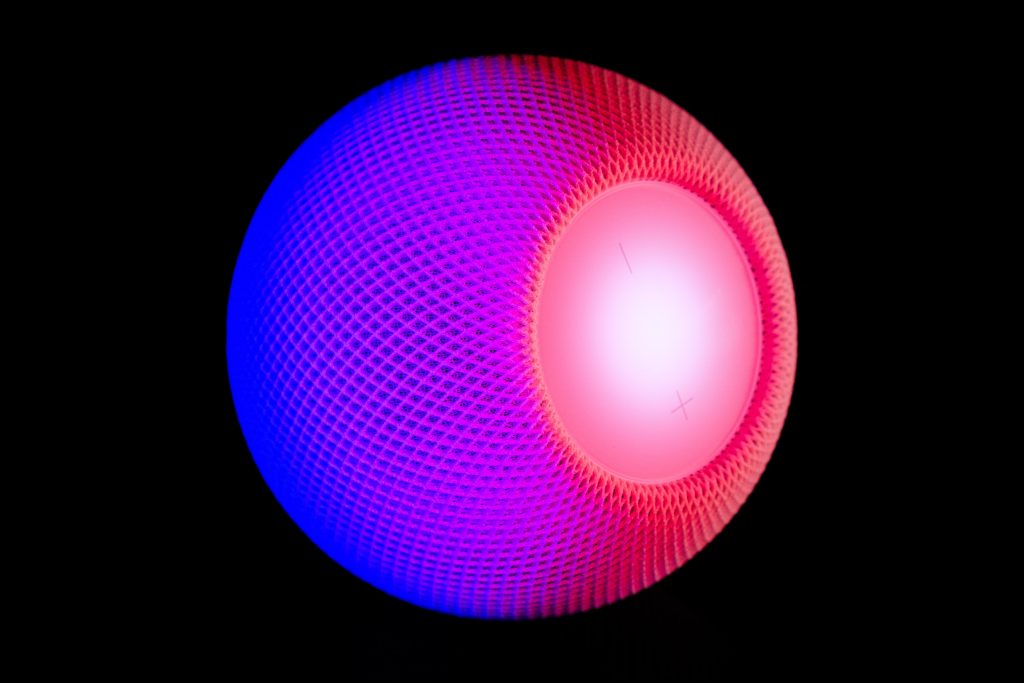
Music therapy, sound therapy, binaural therapy and vibro acoustic therapy are all influences for The Hum, and it’s proven that sound and music can have therapeutic benefits.
Frequencies of 40hz can enhance cognitive skill, baroque music is supposed to help you learn, and Mickey Hart of The Grateful Dead testified to the fact that elderly people with dementia or Alzheimer’s had temporarily regained some of their memory after being in a drum circle for 45 minutes.
However, Clearly is emphatic that The Hum is not a medical device, it’s entertainment. And while neuroscience is one of the ways in which they seek to source frequencies, there’s equal insight to be gained from spiritual healers and gut feeling.
Do We Need A Certification System For Sound?
Sound can be triggering as well as transformative – so as experience creators, we need to be very careful about how we use it.
“We have a duty as creators to recognise which type of frequency might be triggering for those not ready to receive it, especially very high frequencies. If you go above the heart chakra, it can turn the experience around and the person can become very anxious. We need to start working together to understand those limits.”
Gen Cleary
Some examples of triggering frequencies and sounds include:
- Gunshot or war soundtracks (or indeed, sonic weapons!)
- 27 Hz used in ‘Irreversible’ to produce panic
- 19 Hz causing fear
- Ultrasonics as pest control
- Heavy bass making you throw up (hence the need for warning signs in the heavy bass rooms in some nightclubs!)
- Sound being used to induce a hallucinatory effect
While there are some contexts where this might be useful – in creating a haunted house experience, for example – it should be handled with great care. One way around this might be to ask people to sign a waiver, as participants are asked to do before entering the Dreamachine, or as those attending Swamp Motel’s The Drop had to.
You could also create a preset – although Cleary warns that it’s better to start low and allow people to dial it up if they want, rather than starting at 100 and dial it down. This is because our ego might get in the way of our wellbeing.
Perhaps the answer lies in creating a “menu” for sonic experiences. Just as we might indicate the spiciness of a dish on a restaurant menu with a number of chillies, we could have a similar ranking for the intensity of a frequency. (As The WXO continues to develop its own certification system for experiences, this is another category we’ll explore.)
“People won’t yet understand their ‘sonic profile’. It’s an interesting journey we’ll see develop over the next 3-5 years, and this kind of innovation will bring it to the fore.”
James Wallman
Bookending The Experience
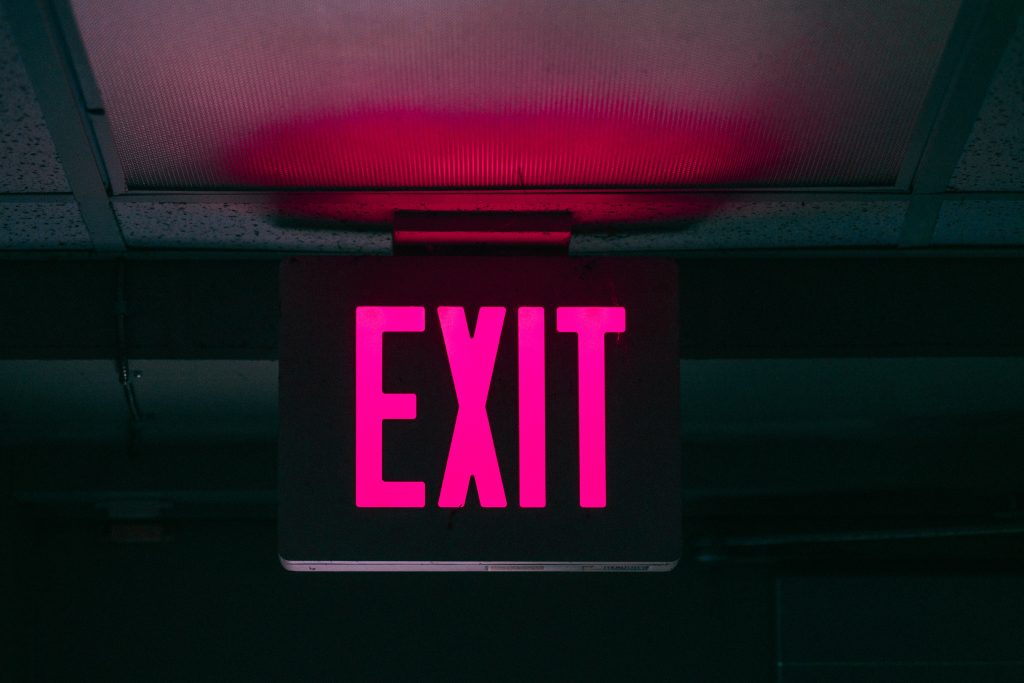
Ultimately, no matter how much of a warning you give or how much you try to prepare people, sometimes your experience won’t be for them – in which case, you need to provide them with a safe exit. After all, we’re designing not only for the anticipating and participating, but also the remembering self.
“As much as we put content/trigger warnings, sometimes people have to leave, so we have staff there to support them. The floor staff is super important here.”
Jacqui Rossi
This reminds us of Campfires 76 & 77 and the importance of using your “front line” to read your audience’s reactions and tailoring your experience to meet their needs accordingly.
“I see a lot of parallels with the traditional psychedelic experience and bookending that liminal bit, whether in a ritual context or not. Having set up and aftercare is very important – you could be unlocking things that people don’t know how to deal with.”
Ramsay Wood
If you’re dealing with a powerful and potentially disruptive experience, having a human element to guide people in and out of these experiences is important, even if it is more expensive. Think of it as aftercare.
The WXO Take-Out
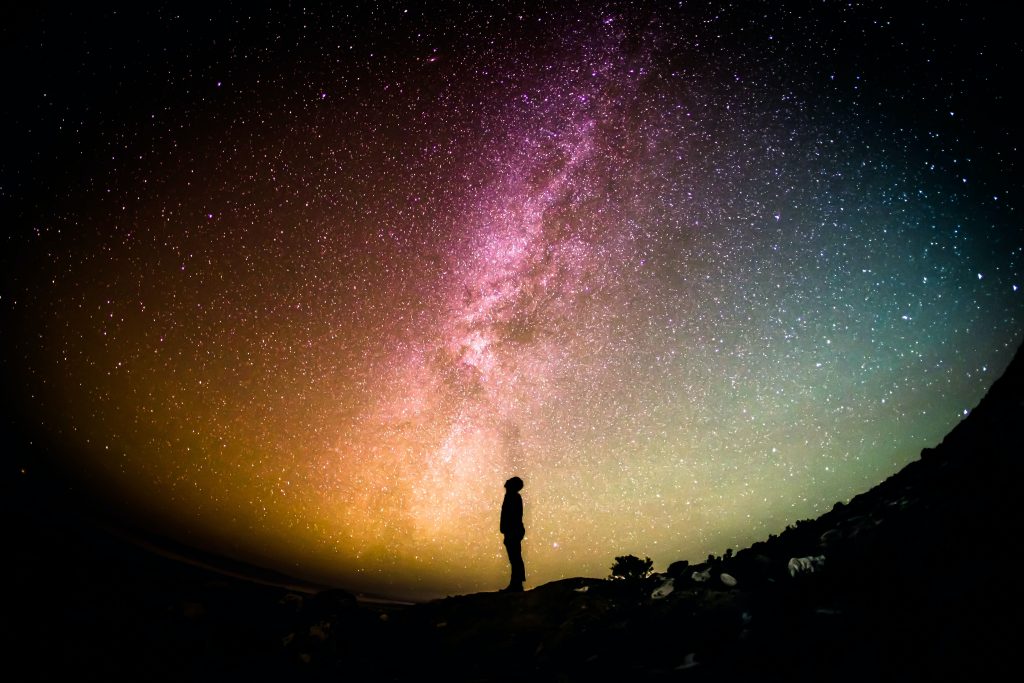
We think this is an incredibly exciting time to be involved in immersive audio, with so much still to explore as we seek out new frequencies and delineate the boundaries between entertainment and therapy, trauma and transformation, and intervention and impact.
And while these questions need to be investigated sensitively and handled with care, the potential to transform the way people think about sound – not just in the moment, but also for the rest of their lives – is a rich one.
In Cleary’s words:
“The right frequency might just change the world.”
Gen Cleary
So next time you’re designing an experience, ask yourself:
- How do you currently use sound in your experiences?
- Where could you invoke sound or other senses to heighten your experience?
- How could you tap into hypnagogic, psychedelic or other mental states to improve your audience’s wellbeing?
To continue the conversation, WXO Members can head to the topic on My WXO here.
To see the full line-up for the WXO Campfires Season 5, click here.
To apply to join the WXO and attend future Campfires, click here.






